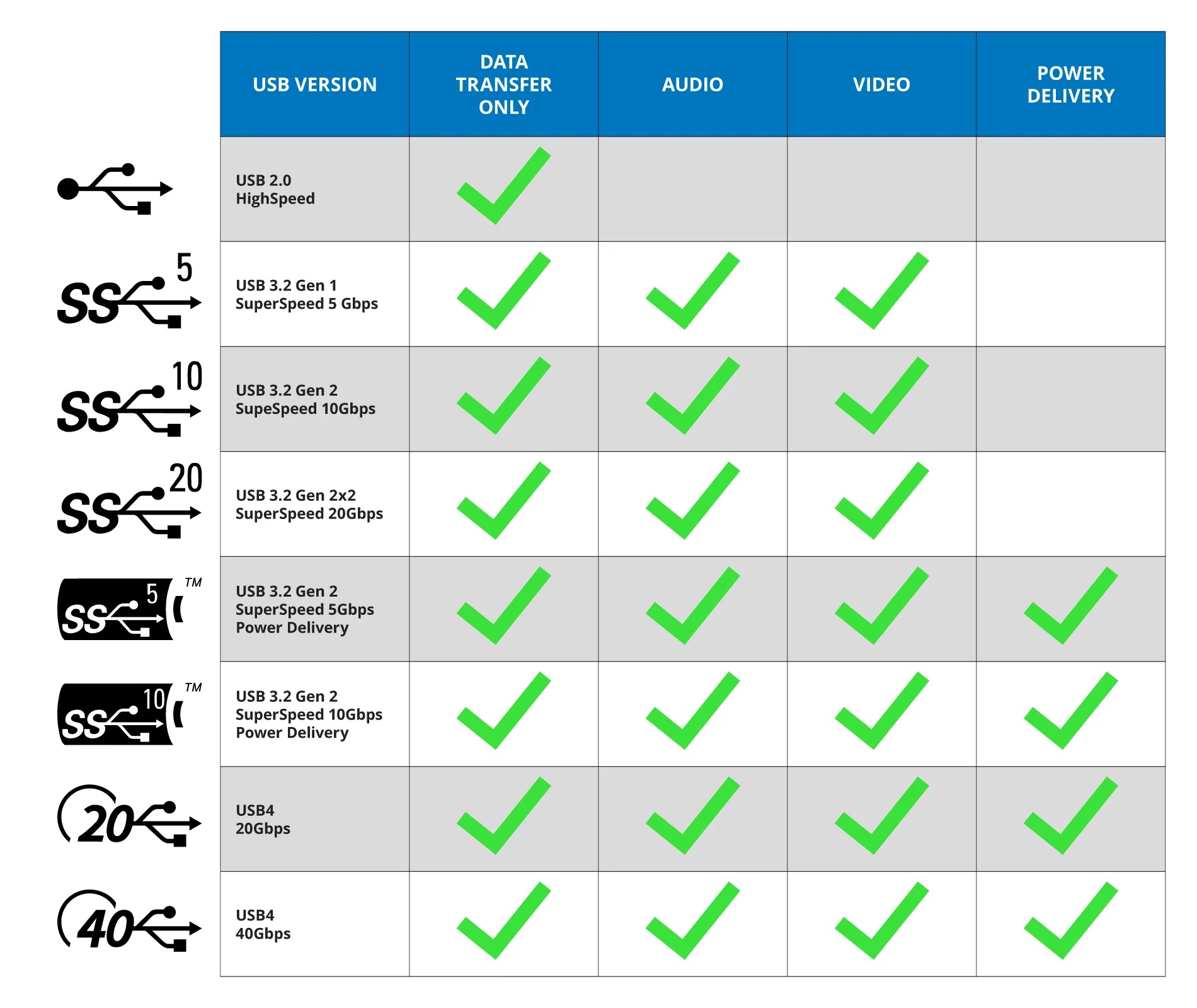USB-C: The new standard
October 2023
Why USB-C?
The development of the USB-C cable makes it possible for the first time to transfer video signals, data and power via a single cable. The USB-C port and cable support HDMI, DVI, Displayport, Thunderbolt, and VGA up to 100 watts.
The USB-C cable can be used for various consumer electronics, such as: smartphones, tablets, laptops, wireless earplugs and e-readers.

![]() The connection has an oval shape and therefore has no top or bottom.
The connection has an oval shape and therefore has no top or bottom.
This makes fidgeting to connect the cable properly a thing of the past.
Which different USB standards & versions are there?
The type of USB says something about what kind of port your device has, so for example type C. The USB version says something about the transfer speed and power. The different USB versions are: USB 1.1, USB 2.0, USB 3.0, USB 3.1 and USB 3.2. These different variants differ in maximum transfer speed, current output and voltage.
The advantage of the USB-C is that it supports the latest USB versions such as 3.0, 3.1 and 3.2. In practice, the USB-C is combined with the possibilities of USB version 3.2. This version has a transfer speed of up to 20 Gbps and features SuperSpeed.
However, the type-C port is also compatible with the older versions that are connected to it and the type-C port would work with USB version 4.0. With this, the gate has been developed with the future in mind and will remain relevant for the decade.

(source: https://visiontek.com)
USB-C mandatory from 2024
In 2022, the European Council agreed to introduce USB-C as the mandatory standard for charging consumer electronics. By introducing this obligation, the EU expects consumers to purchase plugs and chargers less often and hopes that this will reduce the large amount of electronic waste.
View all news